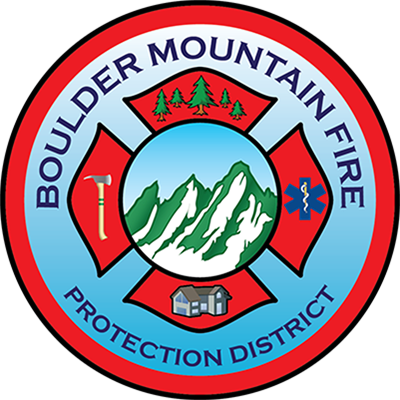In our beautiful mountain community of Boulder Heights, a proactive initiative is underway to mitigate wildfire risk and bolster community safety. The project, spanning 24 acres, aims to establish a shaded fuel break according to Colorado State Forest Service standards. This ambitious endeavor not only addresses immediate fire hazard reduction but also integrates ecological restoration and community engagement.
Project Scope and Implementation
Unmitigated land in Boulder Heights
The primary objective of the project is to thin existing forest stands. This action serves multiple purposes: It enhances forest health by restoring natural density, reduces the intensity of potential wildfires, and minimizes the impact of insect and disease outbreaks. Coincidentally, we are having a severe tussock moth infestation, which has temporarily halted progress due to health concerns.
Key to the project’s success is using the forest’s resources sustainably. Slash material generated from thinning operations will be chipped, and usable firewood will be harvested and available to local property owners and residents. This dual approach ensures both that the immediate fire hazard is reduced and that valuable resources are put to beneficial use within the community.
Mitigated land in Boulder Heights
Strategic Importance and Community Benefits
Community Protection: Camp Paul Hummel, the “church camp,” in Boulder Heights represents a critical defense zone against wildfires encroaching on the neighborhood. By establishing this shaded fuel break, firefighters gain a crucial holding feature during fire events. Approximately 300 homes directly benefit from this reduced fire risk, with an additional 300 homes indirectly protected by improved forest conditions.
Emergency Evacuation Route: Beyond fire protection, the project enhances the church camp’s vital evacuation route linking Sky Trail Road and Mine Lane. This strategic corridor ensures residents have reliable access to safety during wildfire emergencies, regardless of the fire’s location.
Local Stakeholder Engagement: The project is situated on the grounds of the church camp, which hosts various events and groups year-round. These include religious gatherings, outdoor recreational activities like hiking and archery, and full-time caretakers. By safeguarding this property through improved forest management, the project directly benefits these stakeholders, ensuring continued safe and enjoyable use of the camp facilities.
Collaborative Efforts
Successful implementation of the shaded fuel break relies on a collaborative effort among several key partners:
Larimer Conservation Corps: Funded through grants, this group brings chainsaw and hauling expertise. Over four weeks, starting in mid-July 2024, the Corps will assist in vegetation cutting and movement, crucial for preparing the area for subsequent chipping.
Boulder Mountain Fire Protection District: Integral to the project, local firefighters contribute their expertise in cutting, hauling, and chipping operations. Their involvement ensures efficient execution and aligns with community firefighting objectives. Firefighting personnel and equipment allocated for this project are funded by federal, state, and county grants totaling $126,000.
Local Property Owners: Actively engaged in the project, property owners assist in gathering and removing usable firewood for personal use. This participation not only supports community resilience but also fosters a sense of ownership and responsibility among residents.
A Good Example
In conclusion, the shaded fuel break project in Boulder Heights exemplifies a proactive approach to wildfire mitigation and community resilience. By leveraging partnerships, sustainable forest management practices, and local engagement, the initiative protects lives and property and enhances the ecological health of the surrounding landscape. As communities nationwide face escalating wildfire risks, Boulder Mountain Fire Protection District is setting a commendable example of effective collaboration and proactive risk management in the wildland–urban interface with this Boulder Heights project.


